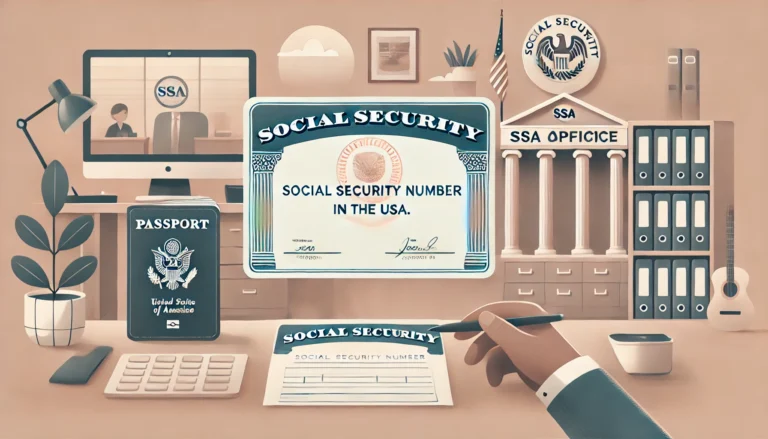What is a Social Security Number
The Meaning of ID Numbers in the U.S.: Understanding Your Social Security Number (SSN) and Other Identification Systems
Introduction
In the United States, identification numbers play a crucial role in everyday life, serving as the backbone for numerous systems, from banking to government services. Among these, the Social Security Number (SSN) stands out as the primary identification system for citizens and eligible residents. The SSN not only serves as a means of tracking individuals for Social Security benefits but also acts as a vital tool for various administrative functions. Understanding the significance and structure of these identification numbers is essential for navigating the U.S. system effectively.
What is a Social Security Number (SSN)?
Definition and Purpose of SSN
The Social Security Number (SSN) is a unique, nine-digit number issued by the Social Security Administration (SSA) to track individuals for Social Security purposes. Initially created in 1936, the SSN was primarily designed to manage the Social Security program. However, it has evolved into a de facto national identification number used across various sectors.
Assignment Process
SSNs are assigned to U.S. citizens, permanent residents, and temporary residents who are authorized to work in the country. The application for an SSN can be made online, via mail, or in-person at a local SSA office. Applicants must provide proof of identity, age, and citizenship or immigration status.
Role as a Primary Form of Identification
The SSN has become a critical identifier in the U.S., used for everything from opening bank accounts to filing taxes. Its importance cannot be overstated; it is often required for employment, applying for loans, and accessing government services.
How to Obtain a Social Security Number?
Application Process
To obtain an SSN, individuals need to complete an application form (Form SS-5) and submit it to the SSA. The application process can vary slightly based on the applicant’s status (citizen, resident, or non-citizen).
Required Documentation
When applying for an SSN, individuals must provide:
- Proof of identity (e.g., U.S. passport, state-issued ID)
- Proof of age (e.g., birth certificate)
- Proof of citizenship or immigration status (e.g., green card, visa)
Components of the SSN
Structure of the SSN
The SSN consists of three parts:
- The Area Number: The first three digits, which originally indicated the geographical area of the applicant’s residence when the SSN was issued.
- The Group Number: The next two digits, which were used for administrative purposes to break down the area numbers into smaller groups.
- The Serial Number: The last four digits, which are unique to each individual within the group.
Significance of the Number Breakdown
Though the original significance of the area number has diminished due to the widespread issuance of SSNs, it still reflects historical data about where individuals lived when they received their SSN. Today, the numbers are assigned randomly, which helps to protect against identity theft.
Importance of ID Numbers in the U.S.
Uses of the SSN
The SSN serves numerous essential functions in daily life, including:
- Banking: Required for opening bank accounts and applying for loans.
- Employment: Employers use SSNs for tax reporting and verifying eligibility to work.
- Government Services: Necessary for receiving benefits like Social Security, Medicare, and Medicaid.
Other Forms of Identification
State IDs and Driver’s Licenses
In addition to the SSN, many states issue identification cards and driver’s licenses that serve as valid forms of identification. These IDs are often required for:
- Driving legally within the state
- Voting in elections
- Traveling domestically
Interconnection with the SSN
State IDs and driver’s licenses often require the applicant’s SSN during the application process, linking the two forms of identification. This interconnection streamlines verification processes across various platforms, from banks to government agencies.
Frequently Asked Questions (FAQs)
What to Do if Your SSN Card is Lost or Stolen?
If your SSN card is lost or stolen, it’s essential to report it to the SSA. You can apply for a replacement card using Form SS-5. It’s also advisable to monitor your credit report and bank statements for any unusual activity.
How to Update Your SSN Information?
To update your information, you must contact the SSA and provide documentation that supports the change. This could include legal name changes due to marriage or divorce.
Can Non-Citizens Obtain an SSN?
Yes, non-citizens can obtain an SSN if they meet specific eligibility criteria, such as having a valid work visa or being a permanent resident.
Conclusion
Understanding ID numbers in the U.S., particularly the Social Security Number, is crucial for navigating various systems and accessing essential services. The SSN serves not only as a tool for identification but also as a gateway to numerous opportunities and benefits in American life. Recognizing the importance of these numbers can empower individuals to engage more fully with the systems that govern their daily experiences.



